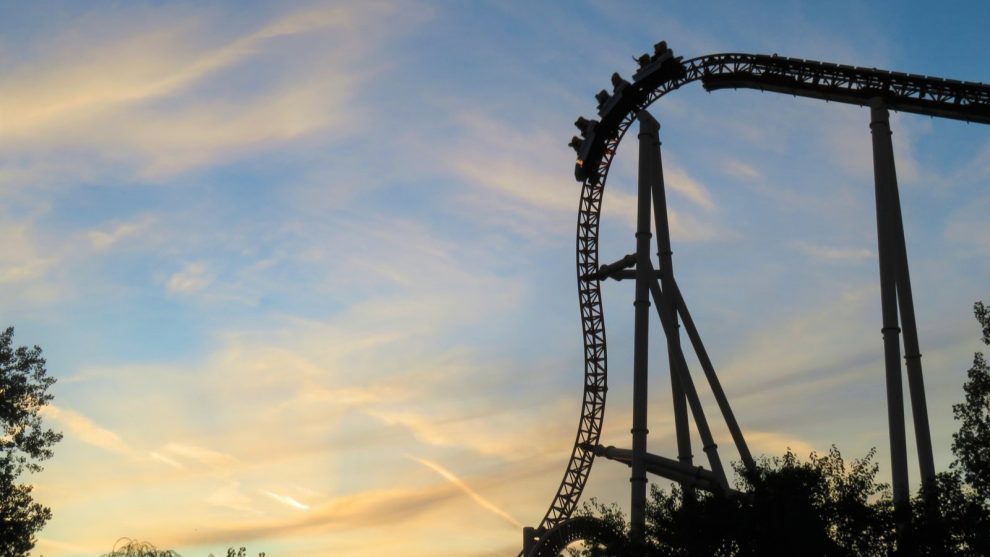
If you’ve been on a rollercoaster, you know there’s nothing like the slow, steady climb upwards. You feel a mix of anxiety and anticipation. You know that any second, you’ll reach the peak before plunging downward.
Well folks, you don’t have to go to an amusement park to experience these feelings. Inflation can take you on a similar ride.
Just like a rollercoaster, inflation can be dizzying and unpredictable. And the best way to pinpoint what is driving inflation higher or lower is by tracking two key reports: the Consumer Price Index (CPI) and the Producer Price Index (PPI).
These reports act like your rollercoaster’s blueprint, giving you clues about the upcoming highs, lows, twists and flips that impact everyday prices.
So, in today’s Market 360, let’s discuss this week’s inflation reports. Then we will gauge what can be expected of the Federal Reserve and its rate cut decision at next week’s meeting.
I do want to note, however, that while investors have been focused on inflation, there is another financial event creeping up that is set to throw the markets into another chaotic ride. So, I will also share the details of this coming event with you today.
Looking at the Inflation Blueprint
Consumer Price Index (CPI)
Yesterday morning, the latest CPI report was released, and the markets weren’t pleased.
CPI rose 0.2% in August, which was in line with economist’s expectations. Year-over-year, the CPI rose 2.5%, just below expectations for 2.6%, marking the smallest 12-month increase since February 2021.
The disappointing news came from the core rate. Core CPI, which excludes food and energy, rose 0.3% in August and remained at 3.2% year-over-year. Economists were calling for a 0.2% monthly rise and 3.2% yearly increase.
Looking deeper into the numbers…
- The energy index slipped 0.8% after remaining unchanged in July.
- The food index increased 0.1% in August following a 0.2% rise in each of the past two months.
- The index for used cars and trucks fell 1%, after a 2.3% decrease in July.
Now, I should also add that owners’ equivalent rent (OER), or shelter costs, has been one of the biggest sticking points to cooling inflation further for some time now. The index rose 0.5% in August and was up 5.2% year-over-year. So, despite evidence that home prices are being cut all across the country, it’s not yet showing in the data.
Producer Price Index (PPI)
This morning, we got a look at the latest PPI report, and it met expectations.
PPI rose 0.2% in August, which is what economists were calling for – and the index is up 1.7% in the past 12 months. That’s down from 2.1% in July and it is the smallest annual reading since February.
Core PPI, which excludes food, energy and trade margins, increased 0.3% in August. That’s the same reading as July, but was slightly above expectations for a 0.2% rise. And for the past 12 months, core PPI jumped 3.3%.
Digging further into the details…
- Final demand services rose 0.4% in August following the 0.3% decline in July. One of the biggest factors in this August increase was due to guestroom rentals, which rose 4.8%.
- Final demand goods were unchanged in August following the 0.6% rise in July.
- Food prices rose just slightly at 0.1%.
- Energy fell 0.9% after a 1.8% rise in July.
The bottom line is, when you look at the report as a whole, there are no alarm bells ringing to warrant any panic from the Federal Reserve. It suggests that inflation is cooling enough to fall within the central bank’s target range.
Will These Reports Impact the Fed?
Now, the Federal Reserve is set to cut key interest rates at its policy meeting next Wednesday, September 18. And these economic reports won’t change that.
The fact is inflation has finally been curbed. The Fed’s favorite inflation indicator – the core component of the Personal Consumption Expenditures (PCE) index – showed inflation is finally within the Fed’s 2% target. We’ll get a look at the August numbers on September 27.
I should also add the 10-year Treasury yield has fallen to about 3.7%. In fact, all Treasury yields have slipped lower, thanks to the inflation reports this week. So, this further pressures the Fed to cut rates since it needs to get back in line with market rates.
Also, the yield curve is now officially un-inverted, which means that the 10-year Treasury offered higher returns than the 2-year Treasury yield. That’s a sign that things are returning to normal in the bond world, folks.
It also eases fears of a recession. Some analysts believe an inverted yield curve is a good indicator that a recession is imminent. Thankfully, that hasn’t been the case this time around.
So, a rate cut is baked in the cake for next week and will be the first cut since March 2020. We will also get the latest outlook for rates going forward in the central bank’s latest “dot plot” survey.
The Fed’s dot plot is a quarterly chart that shows Federal Open Market Committee (FOMC) members’ projected outlook for monetary policy over the next several months and years. And it’s incredibly important right now because the previous “dot plot” in June only showed one key interest rate cut on the docket for 2024.
Now, earlier dot plots anticipated more cuts, and I suspect the Fed’s dot plot for September will be back in line with previous expectations. In fact, I anticipate three key interest rate cuts this year: one on September 18, one following the November presidential election and then another in December.
The Start of Another Wild Ride
I know we’ve been on this inflation rollercoaster for some time now, but I think it should come to a stop soon. Next week’s Fed meeting should also help the markets stabilize and climb higher.
But, as I mentioned above, there is a different ride on the horizon, and one that many don’t see coming…
It’s so serious that I call it a financial tsunami.
When this tidal wave makes landfall, its impact will be more violent and more severe than any financial crisis we’ve ever seen.
And let me be clear… The financial tsunami that’s set to wreck our economy is artificial intelligence.
The fact is, anyone who tells you AI is overhyped or a fad has not studied the history of technological disruptions. They are not paying attention to what’s going on today. And they certainly do not understand where we are headed next.
AI is a whole new economic force, it will prompt a societal shift, and it’s like nothing you have ever seen before. So, how can you survive?
Some might think the best way to survive this tsunami is by moving off the grid or buying gold. But the reality is, the way to protect yourself is by investing. Owning shares of world-class companies has always been – and will continue to be – an essential stronghold in times of technological change.
The stock market is the only place I know that allows you to align yourself with innovators, entrepreneurs and wealthy corporations gaining a critical early foothold in these new technologies.
In other words, it’s time to go stock picking – and I have found nine world-class AI- and quantum computing-related stocks that are great buys now.
Click here to learn how you can access this exclusive portfolio of stocks.
Sincerely,

Louis Navellier
Editor, Market 360






